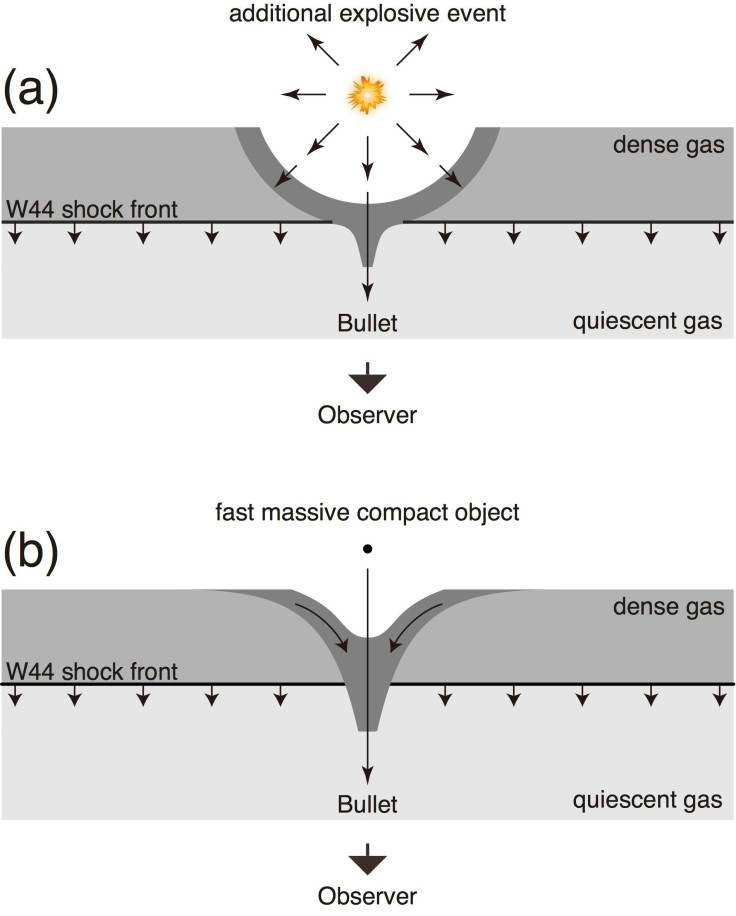Wandering Black Hole Found Hiding In Gas Cloud Of Nearby Supernova Remnant

Nothing spoils a good day faster than a black hole sneaking up on you and gobbling you down — spaghettifying and ripping you to shreds for good measure. Although the chances of a black hole lurking around the corner from your house are quite remote, things aren’t so rosy when we look around our cosmic neighborhood.
Our galaxy, the Milky Way, is estimated to contain at least 100 million black holes — which have masses ranging from five to 10 times that of our sun — of which only a handful have been identified to date. This does not include an entirely different class of black holes, which are a lot more massive.
The problem, of course, stems from the fact that with the exception of active black holes — which are surrounded with a bright accretion disk — it is kind of hard to hunt down objects that do not allow even light to escape their gravitational pull. Wandering, quiescent black holes are, quite literally, gaping voids, dark fabric of space-time waiting patiently for an ill-fated star or planet to fall into their gravitational well.
Now, a team of researchers using the ASTE Telescope in Chile and the 45-meter Radio Telescope at Japan’s Nobeyama Radio Observatory, has, quite serendipitously, discovered one such black hole — one that is estimated to be roughly 36 times as massive as the sun.
The researchers discovered this black hole while observing molecular clouds around the supernova remnant W44, located 10,000 light-years away from Earth. Their primary goal was to see how much energy was transferred from the supernova explosion to the surrounding molecular gas, but, in the process, they stumbled upon signs of a hidden black hole.
During their survey, the researchers discovered a compact molecular cloud named “Bullet” that was moving through space at a breakneck speed averaging over 50 miles per second.
“Most of the Bullet has an expanding motion with a speed of 50 km/s, but the tip of the Bullet has a speed of 120 km/s,” Masaya Yamada, a graduate student at Keio University in Japan, who was part of the team that made the discovery, said in a statement released Thursday. “Its kinetic energy is a few tens of times larger than that injected by the W44 supernova. It seems impossible to generate such an energetic cloud under ordinary environments.”
According to the researchers, there are two possible scenarios in which such a cloud could have been created — the first one that involves the expanding gas shell of the supernova remnant passing by a static black hole, and the other wherein a fast-moving black hole plunges through a cloud of dense gas that is then dragged along by the former’s strong gravity.

The methods used to make this discovery, which involved studying the motion of gas inside molecular clouds, could, in the future, reveal stray black holes that may otherwise have remained hidden.
“We found a new way of discovering stray black holes,” study co-author Tomoharu Oka, a professor at Keio University, said in the statement.
The researchers' findings are detailed in a study published in the latest edition of the Astrophysical Journal Letters.
© Copyright IBTimes 2025. All rights reserved.






















